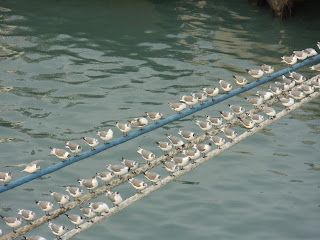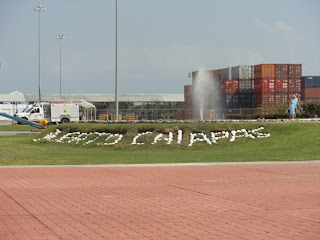We both consider ourselves fortunate to have the health and opportunity to travel as extensively as we have and we both hope to continue for many years more.
Some of the places we have visited have been memorable for good reasons and others for the not so good but all added to the overall experience of a memorable and exciting trip.
Mexico was our least favourite country to visit, mostly because of the very visible police and military presence but we took this as a positive reminder to be a little more cautious when we were out and about.
In Panama we had our most memorable experience when we visited the Embera people in their village. They live a very simple life relatively far removed from civilisation and we hope they can maintain this simplicity for a while longer.
In all places we visited we found that if you engage the local people in conversation and show interest in their way of life they are very welcoming. We were impressed with their friendliness and how they were as equally interested in our lives and way of living as we were of theirs. Though snow, ice and negative temperatures are a very difficult concept to grasp for people who live in the tropics and have had no opportunity to travel.
Children are the most entertaining and we had some very happy interactions with them. Some were shy, some were precocious, others were just curious but all were precious in their own way. In all of our travels, it is our interaction with children that has provided our best memories.
Below are a few snapshots which provide a reflection of the variety of experiences we enjoyed on our trip.
We will continue to blog from time to time when we have an event which we think may be of interest to others.
This little girl was at a market with her grandmother.

Bird condominium?
Boatyard on the beach.
This brother and sister bless their hearts "guided" Ed on his visit to some hot, bubbling, volcanic mud pits. Only $1 - very cheap sir.
Markets are the heart and soul of all villages and small towns.
Street dogs are everywhere - most are ugly - none are aggressive (too hot)
- but some are just weird looking.
A young girl at the Embera village - how sweet is she?
Embera mum and baby - chubby and healthy looking.
Embera women - the body patterns are not tattoos but are natural ink from plants and painted on with a stick. Clothing is optional in their culture and we were assured by our guide that all of the village would be near naked after we departed. How sweet is the simple life.
Hammocks are a way of life in many undeveloped countries - mostly because houses are often small, perhaps only one room and there is no space for permanent beds - or for sleeping outside and up off the ground where it is cooler and away from crawling nasties.
A weaving workshop - very primitive, noisy and a total lack of safety features - do not get your finger anywhere close to a pulley or belt.
Many do not have access to a motor vehicle - horse drawn carts and push carts are very common for transport and moving goods around.


















































